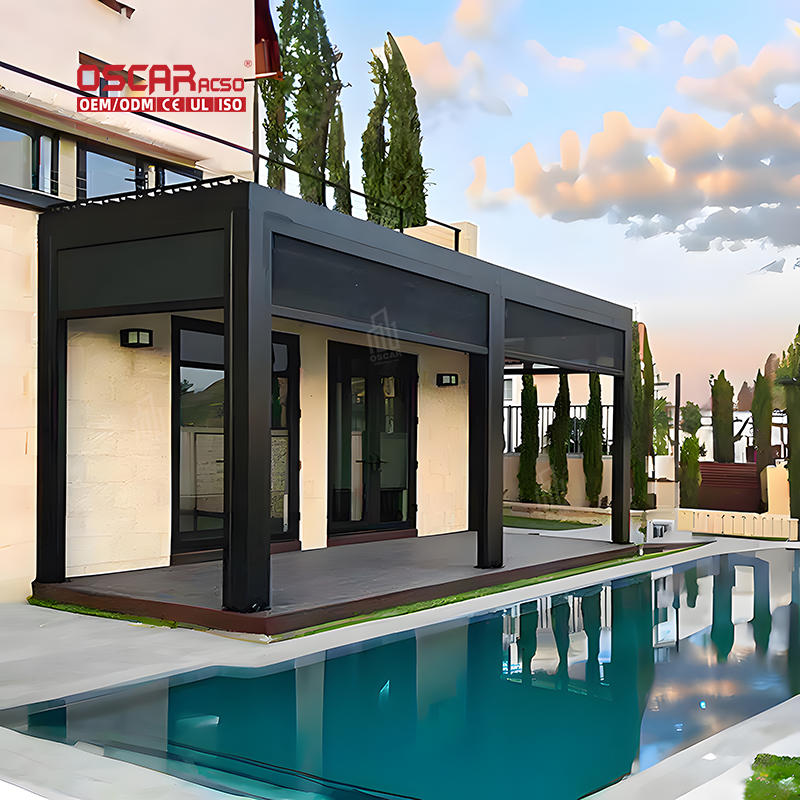How Pergola Works, Unveiling the Magic of Your Outdoor Oasis
Ever wondered how a simple structure can transform your backyard into a stylish and functional retreat? Let\'s dive into ...
Ever wondered how a simple structure can transform your backyard into a stylish and functional retreat? Let’s dive into the mechanics and magic of the pergola.

✨ Basic Structure & Design
A pergola is an outdoor structure consisting of vertical posts or pillars that support crossbeams and an open lattice roof 🏗️. Unlike solid roofs, this open design allows filtered sunlight and air to pass through, creating a balanced microclimate. Pergolas can be freestanding or attached to a building, making them versatile for gardens, patios, and decks.
The open lattice roof is key—it provides partial shade while maintaining airflow. For added shade or privacy, many pergolas support climbing plants like wisteria or ivy, or feature retractable canopies and shade cloths.
.jpg)
🌿 How It Works: Functionality & Benefits
1. Sunlight & Shade Regulation
The pergola’s open roof structure strikes a balance between sun and shade. By blocking direct sunlight while allowing dappled light through, it creates a comfortable space even on hot days. For enhanced shade, options include:
- •
Adjustable louvres to control light and airflow.
- •
Climbing plants that naturally shade and cool the area.
- •
Retractable canopies or fabric covers for added protection.
2. Airflow & Ventilation
The design promotes natural ventilation, preventing heat buildup and ensuring a cool, breezy environment 🌬️. This makes it ideal for lounging or dining outdoors without feeling enclosed.
3. Durability & Weather Resistance
Pergolas are built to last. Common materials include:
- •
Wood (e.g., cedar, oak): Classic and natural but requires maintenance.
- •
Metal (e.g., aluminum): Lightweight, rust-resistant, and low-maintenance.

- •
Vinyl: Durable and easy to clean, though less customizable.
Some advanced models even withstand strong winds and snow loads when properly anchored.
4. Customization & Extras
Modern pergolas can be outfitted with:
- •
Lighting (e.g., fairy lights, built-in LEDs).
- •
Outdoor heaters or fans for year-round use.
- •
Privacy screens or curtains.
These features enhance both functionality and ambiance.
🧩 Types of Pergolas & Their Uses
Pergolas come in various styles to suit different needs:
- •
Traditional pergolas: Feature open lattice roofs and are ideal for supporting climbing plants.
- •
Louvred pergolas: Have adjustable slats for precise control over light and airflow.
- •
Solid-roof pergolas: Offer more protection from rain and sun.

- •
Small vs. large pergolas: Compact ones fit cozy spaces, while larger designs accommodate entertaining crowds.
.jpg)
They’re also versatile in use:
- •
Creating shaded walkways or garden entries.
- •
Defining outdoor dining or lounge areas.
- •
Providing privacy for hot tubs or spas.
🛠️ Installation & Maintenance Tips
Installing a pergola involves:
- •
Securing sturdy posts into concrete foundations for stability.
- •
Attaching crossbeams and lattice to form the roof structure.
- •
Adding optional features like shade cloths or climbing plant supports.
For maintenance:
- •
Wood pergolas may need periodic staining or sealing.
- •
Metal and vinyl options require minimal upkeep—just occasional cleaning.
💡 Why Choose a Pergola?
Pergolas blend aesthetics and functionality seamlessly. They:
- •
Increase property value by enhancing outdoor appeal.
- •
Create defined spaces for relaxation and entertainment.
- •
Support sustainable living through natural cooling and greenery.
Whether you’re seeking a cozy nook for morning coffee or a vibrant space for gatherings, a pergola offers endless possibilities to elevate your outdoor experience 🌟.

